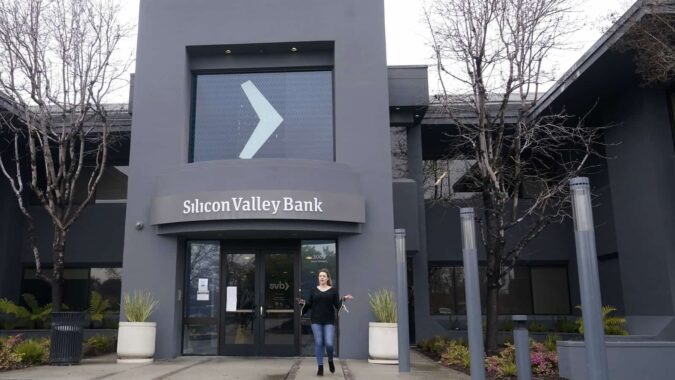Silicon Valley Bank became the biggest US lender to fail in more than a decade after a tumultuous week that saw an unsuccessful attempt to raise capital and a cash exodus from the tech startups that had fueled the lender’s rise.
Regulators stepped in and seized it Friday in a stunning downfall for a lender that had quadrupled in size over the past five years and was valued at more than $40 billion as recently as last year.
The move by California state regulators to take possession of the lender, known as SVB, and appoint the Federal Deposit Insurance Corp. receiver underscores the impact that the US’s rapid interest-rate increase is having on smaller lenders. SVB is the second regional lender to fold this week after Silvergate Capital Corp. announced it was voluntarily liquidating its bank, spurring a broader selloff in bank stocks.
The firms suffered amid the downturn for the technology and crypto start up world over the past several months.
Also read: Amid fears of a crisis, the US begins the debt ceiling battle
“Bank runs are a lot about psychology. And at this point, it’s very rational to be nervous,” said Saule Omarova, a law professor at Cornell University.
Problems mounted for SVB mounted after Peter Thiel’s Founders Fund and other high-profile venture capital firms advised their portfolio companies to pull money from the bank. The calls followed parent company SVB Financial Group announcing that it would try to raise more than $2 billion after a significant loss on its portfolio.
The FDIC said that SVB’s insured depositors would have access to their funds by no later than Monday morning. Uninsured depositors will get a receivership certificate for the remaining amount of their uninsured funds, the regulator said, adding that it doesn’t yet know the amount. In announcing the takeover, the California Department of Financial Protection and Innovation cited inadequate liquidity and insolvency.
Receivership typically means a bank’s deposits will be assumed by another, healthy bank or the FDIC will pay depositors up to the insured limit.
“The FDIC receivership will end the uncertainty about this particular bank,” Omarova said. “But I don’t think that necessarily itself stops people from feeling less safe if they have some kind of exposure to assets or they hold their own money in banks with similar risk profiles.”
SVB was founded in 1983 over a poker game between Bill Biggerstaff and Robert Medearis, according to a statement from the bank’s 20th anniversary. Since its start, the firm has specialized in providing financial services to tech startups.
US regulators arrived at the California offices of SVB as the troubled lender struggled to stabilize its finances on Thursday, Bloomberg News reported.
The bank had about $209 billion in total assets and about $175.4 billion in total deposits at the end of last year, the FDIC said on Friday. “At the time of closing, the amount of deposits in excess of the insurance limits was undetermined,” the regulator said.
